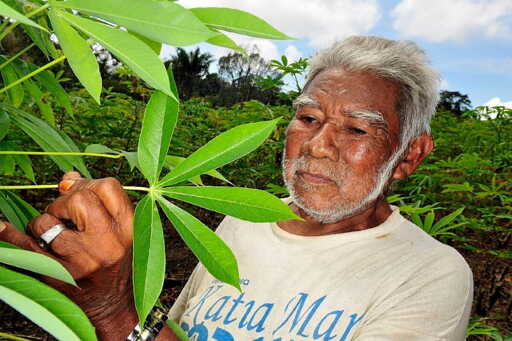As smallholder farmers in French Guiana walked their fields in 2023, they noted a disturbing pattern. Their healthy cassava plants, once green and thriving, had begun to turn yellow. Leaves wilted, stalks withered, and small shoots looking like broomsticks sprouted from the plants. When they dug up their harvest, instead of unearthing large foot-long bunches of cassava, they found only stunted roots. The farmers reported the crisis to agricultural authorities, desperate to find a cure for their threatened crop. When international scientists arrived in 2024 to investigate the blight, they recognized their foe immediately. The witch had arrived in Latin America. Witches’ broom disease is a fungal pathogen, Ceratobasidium theobromae, that has been wreaking havoc on cassava crops in Southeast Asia for more than a decade, crippling yields and fueling economic hardship across that region. Plant scientists had hoped to contain the fungal pathogen to Asia. But since its arrival in South America in 2023, the disease — which attacks the plant’s vascular system — has spread into at least three Amazonian nations: It arrived first in French Guiana, is likely in Suriname, and is now sweeping through cassava production regions in the neighboring northern Brazilian state of Amapá, where it has decimated entire fields, and is also present in Pará state. Cooking cassava in Brazil. Cassava, also known as manioc and yuca, and for its tapioca flour, is native to South America, and an excellent source of carbohydrates. Image by Dennis G. Jarvis via Wikimedia Commons (CC BY-SA 2.0).…This article was originally published on Mongabay
From Conservation news via this RSS feed


